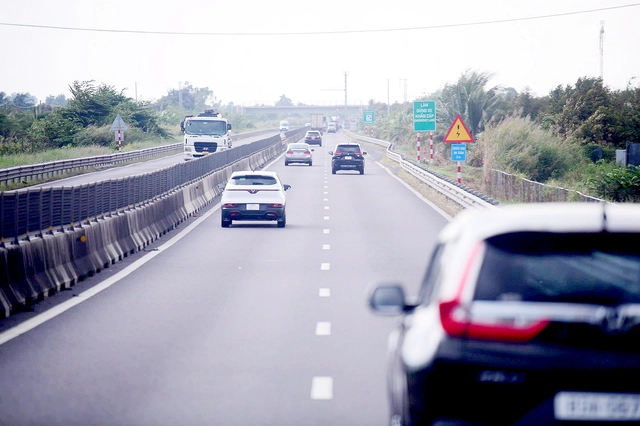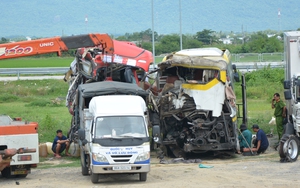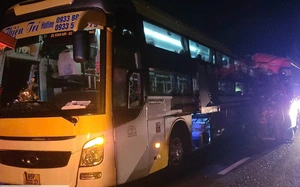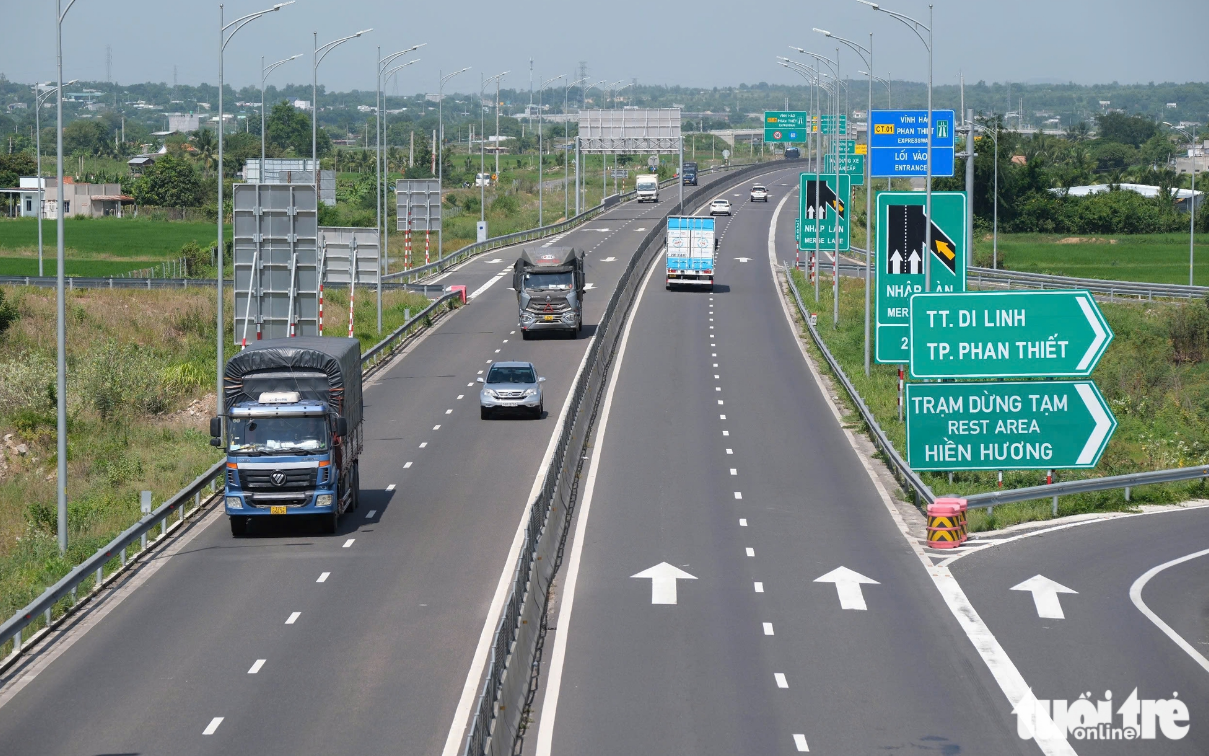
The Trung Luong-My Thuan Expressway in southern Vietnam currently lacks emergency lanes. Photo: Quang Dinh / Tuoi Tre
Inadequacy of two-lane expressways
In Vietnam, two-lane expressways with no emergency shoulders have already shown significant shortcomings. These designs are increasingly unable to meet the rising traffic density.
Major routes like National Highway 1A and existing expressways such as Hanoi-Hai Phong and Ho Chi Minh City-Long Thanh-Dau Giay are already overwhelmed.
New two-lane expressways like Trung Luong-My Thuan or Phan Thiet-Vinh Hao-Cam Lam are anticipated to quickly face the same fate.
Nationwide, nearly 10 such expressways exist.
Without an emergency lane, responding to accidents or breakdowns becomes difficult and dangerous.
These narrow expressways cannot meet the demands of industrial zones, seaports, or logistics hubs, which require fast and efficient transport.
As traffic volume increases, such expressways must be widened, leading to costly upgrades and wasted resources.
Moreover, these limited-scale expressways tend to deter private investors, as revenue from tolls often fails to cover construction and maintenance costs, placing the financial burden on state budgets while delivering limited returns.
Heightened safety risks
Two-lane expressways also pose serious safety risks.
Sharing the road among trucks, buses, and passenger cars increases the chances of accidents due to differences in vehicle size and speed.
The lack of an emergency lane compounds the danger, as vehicles breaking down must stop in active traffic lanes.
One tragic case occurred on July 9 on the Vinh Hao-Phan Thiet Expressway in Lam Dong Province’s Ham Liem Commune.
A sleeper bus suffered a tire blowout and had to stop directly in the traffic lane due to the absence of an emergency lane.
As the driver and his assistant stepped out to inspect, another sleeper bus rear-ended the stalled vehicle, killing three people and injuring dozens more.
In just the first nine months of 2024, this expressway witnessed 13 accidents and 17 casualties, with many of the incidents caused by breakdowns in active lanes.
Lessons from developed nations, future recommendations
Developed countries build expressways with a minimum of six lanes, including emergency lanes, smart traffic monitoring systems, interchanges, and rest stops.
Vietnam’s future expressways must follow suit to meet long-term needs.
Firstly, planning should prioritize building expressways with at least six lanes from the outset. This prevents future expansion costs and better accommodates rising traffic.
Secondly, investment in intelligent traffic management is crucial.
Expressways should be equipped with surveillance cameras, traffic sensors, and electronic signage to help reduce accidents and optimize vehicle flow, especially during bad weather or rush hours.
Thirdly, Vietnam should diversify its funding sources by promoting public-private partnerships.
To attract private investors, expressways must be built on a scale that ensures profitability and benefits for both the public and businesses.
Many of the existing two-lane expressways are low-speed, low-capacity, and yet charge high tolls, making them an unattractive deal for all parties involved.
In short, while two-lane expressways may appear cost-effective initially, they are not a sustainable solution for Vietnam's transportation infrastructure.
The country must shift toward building larger, well-planned, and fully equipped expressways.
Only then can the country’s highway system truly serve as an engine for economic growth, improved living standards, and transportation safety.
Home to over 160,000 km of expressways, China typically builds expressways with at least four lanes.
Key urban routes such as Beijing-Shanghai feature six to eight lanes, and some sections go up to 10-12 lanes.
All of them include emergency stopping lanes and modern surveillance systems.





Max: 1500 characters
There are no comments yet. Be the first to comment.